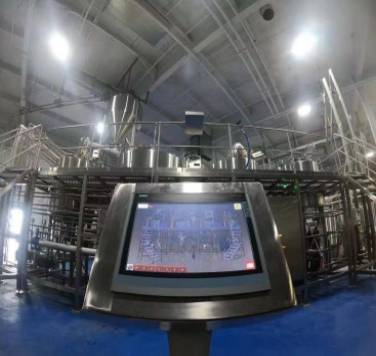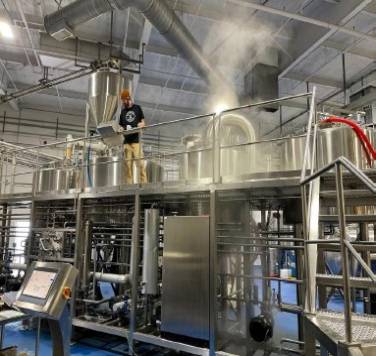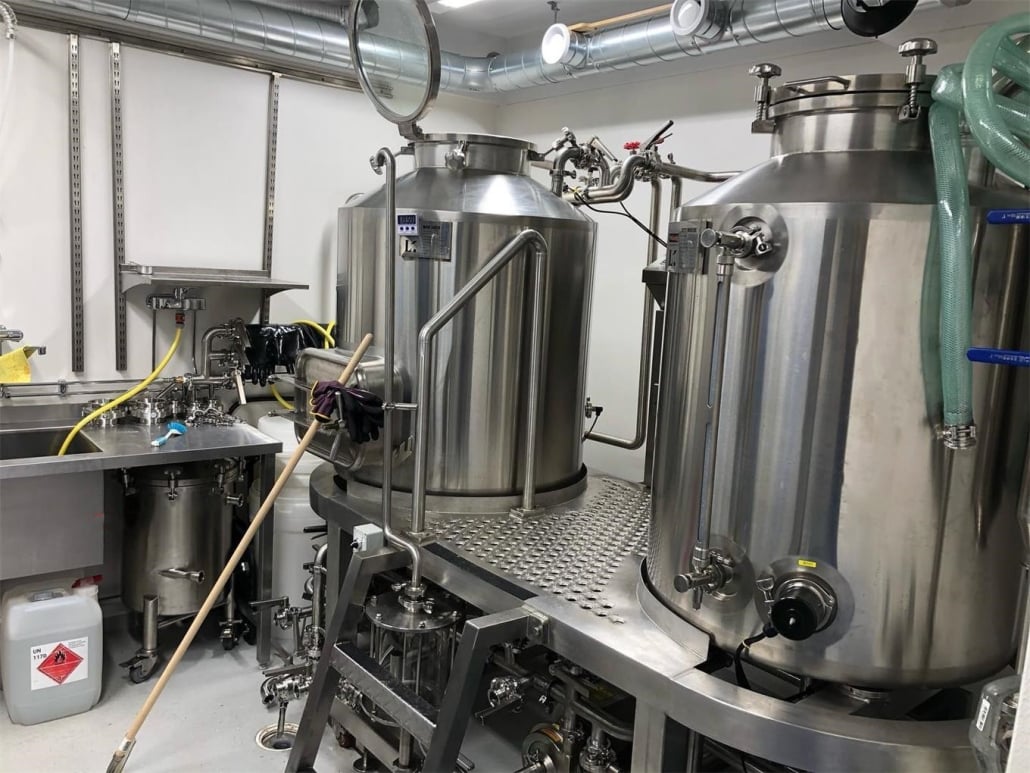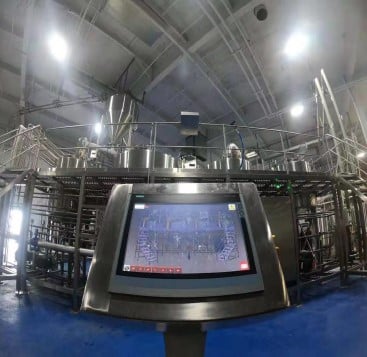Maximizing Beer Fermentation Tanks
Overview: Why Maximizing Beer Fermentation Tanks Matters
Brewing beer is both an art and a science. At the heart of this process lies the fermentation tank, a vessel where yeast transforms sugars into alcohol and carbon dioxide. By optimizing these tanks, breweries can increase production, maintain consistency, and reduce operational costs. Whether you’re a craft brewer or a large-scale manufacturer, understanding how to maximize fermentation tanks can be the difference between good beer and great beer.
Different Types of Beer Fermentation Tanks
Beer fermentation tanks come in various types, each suited to different brewing processes and scales. Here’s a closer look at some common types:
1. Cylindroconical Fermentation Tanks
These are the industry standard for modern breweries. Their cone-shaped bottoms allow for efficient yeast collection and sediment removal, making them ideal for large-scale operations.
2. Open Fermentation Tanks
As the name suggests, these tanks have open tops, allowing for more oxygen interaction. They’re typically used for traditional styles like Belgian ales and wheat beers, where specific flavor profiles are desired.
3. Horizontal Fermentation Tanks
These tanks are often used in lager brewing. Their design increases the surface area, promoting faster yeast settling and enhancing flavor clarity.
4. Unitanks
Unitanks are versatile and can perform both primary fermentation and conditioning. This multi-functional design saves space and simplifies the process for smaller breweries.
Each type of tank has its pros and cons, and selecting the right one depends on the brewing style, production volume, and desired flavor characteristics.

The Basic Functions of Beer Fermentation Tanks
To maximize efficiency, it’s essential to understand the primary functions of fermentation tanks. These include:
1. Capacity Management
The tank’s size directly affects production volume. Proper capacity utilization ensures that breweries can meet demand without overextending resources.
2. Temperature Control
Maintaining the right temperature is crucial for yeast activity. Modern tanks often feature advanced temperature control systems, allowing precise regulation for optimal fermentation.
3. Easy Cleaning and Maintenance
Sanitation is non-negotiable in brewing. Tanks designed for easy cleaning, with features like spray balls and smooth interiors, reduce the risk of contamination and save time.
By focusing on these functions, breweries can streamline their processes and ensure consistent beer quality.
Key Factors to Maximize Efficiency
1. Optimal Tank Design
Choosing tanks with features like insulated walls, advanced cooling systems, and ergonomic designs can significantly improve efficiency.
2. Advanced Monitoring Systems
Modern fermentation tanks often include sensors for pH, temperature, and pressure. These systems allow brewers to monitor and adjust fermentation parameters in real-time.
3. Yeast Management
Healthy yeast is the cornerstone of effective fermentation. Implementing a robust yeast harvesting and pitching system ensures consistent results.
4. Space Utilization
For smaller breweries, space is often at a premium. Compact tanks or unitanks can help maximize production without requiring additional square footage.
Technology and Innovation in Beer Fermentation Tanks
The brewing industry has embraced technology to enhance fermentation. Here’s a table outlining some key innovations:
| Technology | Description | Benefits |
|---|---|---|
| Automated Temperature Control | Sensors and automated cooling jackets regulate temperatures. | Ensures consistent yeast activity. |
| CIP (Clean-In-Place) Systems | Automated cleaning systems integrated into tanks. | Saves time and reduces contamination. |
| Pressure Fermentation | Tanks designed to withstand higher pressures. | Allows for carbonation during fermentation. |
| IoT Integration | Internet-connected tanks for remote monitoring and control. | Enhances efficiency and reduces errors. |
These advancements not only improve productivity but also enable brewers to experiment with new styles and techniques.






Common Challenges and Solutions in Maximizing Fermentation Tanks
1. Inconsistent Temperature Control
Challenge: Uneven temperatures can lead to off-flavors and stalled fermentation.
Solution: Invest in tanks with advanced cooling systems and regular calibration.
2. Contamination Risks
Challenge: Bacteria and wild yeast can ruin entire batches.
Solution: Implement rigorous cleaning protocols and use tanks with smooth, easy-to-clean surfaces.
3. Limited Production Capacity
Challenge: Scaling up production without additional space can be difficult.
Solution: Use vertical tanks or unitanks to maximize space efficiency.
How to Choose the Right Beer Fermentation Tanks
Selecting the right fermentation tank involves considering several factors:
1. Production Volume
Determine your current and future production needs. Oversizing can waste resources, while undersizing limits growth.
2. Brewing Style
Different beer styles require specific tank features. For instance, ales may benefit from open tanks, while lagers need horizontal designs.
3. Budget and Space
Evaluate your budget and available space. Compact, multi-functional tanks are ideal for smaller breweries.
4. Technology Integration
Modern tanks with IoT and automation can improve efficiency but come at a higher cost. Balance the investment with long-term benefits.

FAQs
| Question | Answer |
|---|---|
| What is the ideal temperature for fermentation? | It depends on the beer style. Ales typically ferment at 60-75°F, while lagers require 45-55°F. |
| How often should fermentation tanks be cleaned? | Tanks should be cleaned after every batch to maintain hygiene and prevent contamination. |
| What is the lifespan of a fermentation tank? | With proper maintenance, stainless steel tanks can last 20+ years. |
| Can fermentation tanks be customized? | Yes, many manufacturers offer custom tanks tailored to specific brewery needs. |
| How do I prevent yeast from sticking to the tank walls? | Use tanks with smooth interiors and incorporate an effective agitation system. |
Frequently Asked Questions (FAQ)
- Q1: What KPIs should I track to maximize Beer Fermentation Tanks?
A1: Monitor attenuation curve, differential pressure (cone vs headspace), dissolved oxygen post-transfer (20–50 ppb target), temperature stability (±0.3–0.7°C), and tank turnaround time. - Q2: How does pressure fermentation help tank utilization?
A2: Running unitanks at 10–15 psi enables spunding/natural carbonation, shortens maturation, and can free brite tank capacity—often reducing tank residency by 1–2 days for lagers. - Q3: What jacket zoning is best for cylindroconical tanks?
A3: Multi-zone jackets (cone + lower and upper body) provide uniform heat removal, prevent hotspots, and improve yeast performance, especially on high gravity or exothermic ferments. - Q4: How can I reduce oxygen pickup during dry hopping?
A4: Use purgeable hop dosers, CO2/N2-blanketed additions, closed-loop recirculation (if used), and verify purge with oxygen sensors; this preserves hop aroma and shelf life. - Q5: When should I harvest yeast to maximize reuse quality?
A5: After diacetyl reduction but before cold crash compacts the cone—typically 24–48 hours post-peak activity for ales—aiming for 1–2% cone volume per crop with >90% viability.
2025 Industry Trends: Maximizing Beer Fermentation Tanks
- Sensor-led fermentation: Wider adoption of inline density (°P), DO, and VDK sensors with cloud logging for predictive endpoints.
- Pressure-capable unitanks as standard: 30 psi ratings plus reliable PRVs to support spunding, closed transfers, and faster tank turns.
- Oxygen-minimized cold side: Closed dry-hop systems, purge verification, and low-TPO packaging practices integrated into SOPs.
- Sustainability gains in the cellar: Heat reclaim from glycol, CIP reuse, and shorter cycle recipes reduce water and energy per hL.
- Data-driven yeast management: Viability/viability tracking, pitch calculators, and cone cropping SOPs improve generational consistency.
2025 Benchmarks for Maximizing Fermentation Efficiency
| Metric / Spec | 2023 Typical | 2025 Target/Best-in-Class | Why it Matters | Sources |
|---|---|---|---|---|
| Temp stability (FV) | ±1–2°C | ±0.3–0.7°C | Flavor consistency, yeast health | ASBC, MBAA |
| Tank residency (ale, days) | 10–14 | 7–10 | Throughput, capacity gain | BA benchmarking |
| Tank residency (lager, days) | 21–30 | 14–21 (with pressure) | Faster turns without flavor penalty | MBAA case data |
| Post-transfer DO (ppb) | 80–150 | 20–50 | Shelf life, hop retention | ASBC DO/TPO |
| Water per FV CIP (L/hL beer) | 0.7–1.0 | 0.4–0.6 | Utility savings | Brewers Association Sustainability |
| CO2 use (lb/bbl) | 1.0–1.5 | 0.6–1.0 | Cost and footprint | Industry case studies |
Selected references: American Society of Brewing Chemists — https://www.asbcnet.org; Master Brewers Association of the Americas — https://www.mbaa.com; Brewers Association — https://www.brewersassociation.org
Latest Research Cases
Case Study 1: Pressure Fermentation to Shorten Lager Residency (2025)
Background: A regional brewery needed more capacity without adding tanks.
Solution: Upgraded unitanks to 30 psi rating; implemented spunding at 1.6–2.0 vol CO2; standardized closed transfers and purge-verified dry-hop additions.
Results: Lager tank residency reduced from 24 to 17 days; CO2 purchases down 29%; packaged TPO dropped to 20–35 ppb; throughput +18% with no sensory regressions.
Case Study 2: Inline Density and VDK Sensors Stabilize Endpoints (2024)
Background: Variable attenuation and diacetyl rest timing caused inconsistent tank turns.
Solution: Installed inline oscillating U-tube density and gas chromatography-based VDK sensors with PLC-driven cooling ramps and harvest timing alerts.
Results: Endpoint variance decreased 60%; average fermentation time -1.3 days for ales; dump rate fell from 1.4% to 0.5% over six months.
Expert Opinions
- Dr. Tom Shellhammer, Professor, Oregon State University
Viewpoint: “Precise thermal control and oxygen management in fermentation deliver the largest gains in flavor stability relative to investment.” - Mary Pellettieri, Brewing Quality Consultant; Author of Quality Management for Breweries
Viewpoint: “Define numeric clarity and DO/VDK limits in your SOPs. Measured targets make maximizing Beer Fermentation Tanks repeatable across crop years.” - Chris White, PhD, Founder/CEO, White Labs
Viewpoint: “Healthy yeast is capacity. Proper pitch rates, oxygenation, and timely cropping extend performance across generations and free up tank days.”
Practical Tools/Resources
- ASBC Methods of Analysis (DO/TPO, VDK, fermentation tracking) — https://www.asbcnet.org
- Brewers Association Sustainability and Cellar Best Practices — https://www.brewersassociation.org
- MBAA Technical Quarterly and webinars on fermentation control — https://www.mbaa.com
- White Labs Yeast Pitch Rate Calculators — https://www.yeastcalculator.com
- OPC Foundation (OPC UA) for integrating tank sensors/PLCs — https://opcfoundation.org
Last updated: 2025-09-01
Changelog: Added 5 FAQs focused on KPIs, pressure fermentation, jacket zoning, oxygen control during dry hop, and yeast harvesting; introduced 2025 trends with benchmark table and sources; provided two case studies on pressure fermentation and inline sensing; added expert viewpoints and practical resources
Next review date & triggers: 2026-02-15 or earlier if ASBC/BA/MBAA guidance updates, new low-TPO packaging data emerges, or widespread adoption of inline VDK sensors changes best practices
Share this entry
Interested in learning more about Brewing Systems including additional details and pricing information? Please use the form below to contact us!
YOLONG BREWERY EQUIPMENT FAQS
- Commercial Brewery / Craft Brewery / Microbrewery / Nanobrewery
- What is The Difference Between Craft Beer and Industrial Beer?
- The Bespoke Differences In Custom Brewing Systems
- Everything You Need to Know About Kettle Souring
- How to Choose Brewing Equipment for Your business?
- How To Choose The-Best Partner To Build Your Commercial Microbrewing System?
- Two Detection Sensors That You Need To Use In Your Brewhouse System
- Remote Control Applications in Brewing Equipment/How does it work?
- How To Clean Your Brand New Brewery Tanks?

